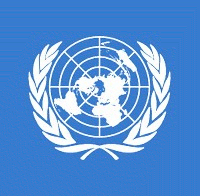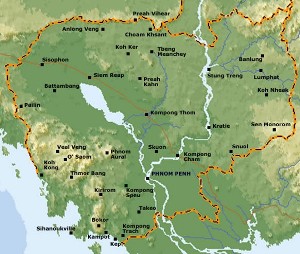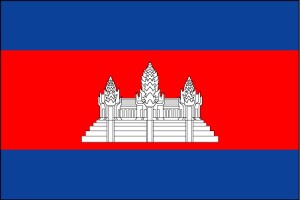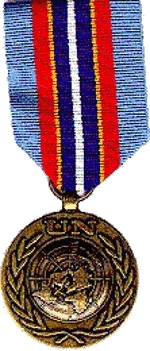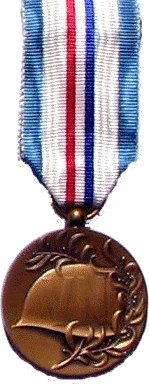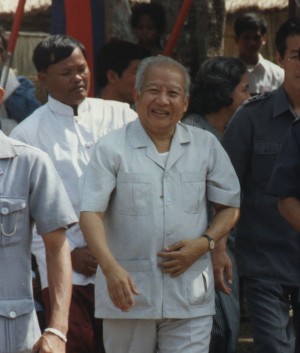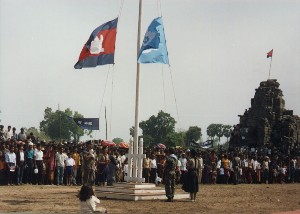| |
UNAMIC DEPLOYED
Establishment
The Secretary-General reiterated to the Security Council on 30
September 1991 that the United Nations could help in maintaining
the ceasefire by deploying in Cambodia a small advance mission
consisting mainly of military liaison officers in order to help
the parties to address and resolve any violations or alleged violations
of the ceasefire. Such an advance mission could be envisaged as
the first stage of the good offices mission foreseen in the draft
peace agreements. On that basis, the Secretary-General recommended
that the Security Council authorize the United Nations Advance
Mission in Cambodia (UNAMIC), to become operational as soon as
the Paris Agreements were signed. UNAMIC would be absorbed into
UNTAC once UNTAC was established by the Security Council and its
budget adopted by the General Assembly.
The Secretary-General recommended that UNAMIC operate under the
authority of the Security Council and United Nations command.
The mission would be led in the field by a civilian Chief Liaison
Officer, who, in addition to duties in relation to UNAMIC, would
have responsibility for maintaining contact with SNC on preparations
for the deployment of UNTAC and on other matters related to the
role of the United Nations. A Senior Military Liaison Officer
would report to the Secretary-General through the Chief Liaison
Officer. The Secretary-General would, in turn, report regularly
to the Security Council on the operations of UNAMIC.
UNAMIC would deploy small teams of military personnel with experience
in training civilian populations on how to avoid injury from mines
or booby traps. Initially, the teams would give priority to populations
living in or close to areas of recent military confrontation.
The Secretary-General envisaged the eventual expansion of the
programme, in close consultation with the United Nations High
Commissioner for Refugees (UNHCR), to repatriation routes, reception
centres and resettlement areas for refugees. These activities
would need to be carefully coordinated with the mine-awareness
programme begun earlier in 1991 for Cambodian refugees and displaced
persons in the camps along the Cambodia-Thailand border.
UNAMIC was estimated to require 8 civilian liaison staff, 50 military
liaison officers, 20 other military personnel to form the mine
awareness unit, and approximately 75 international and 75 local
civilian support staff. In addition, there would be a military
communications unit of some 40 persons, provided by Australia
as a voluntary contribution. An air unit of four utility helicopters
and one fixed-wing aircraft would also be needed.
The Secretary-General also informed the Security Council that,
operationally, UNAMIC would be headquartered in Phnom Penh, deploying
military liaison units to the general military headquarters of
each of the Cambodian parties. In addition, teams would be deployed
to two forward positions, Battambang and Siem Reap, which were
also to be main bases for the mine-awareness programme. UNAMIC
would require an effective and independent round-the-clock communications
system, open to the Cambodian parties so as to facilitate communications
between them and help resolve problems with the maintenance of
the ceasefire. The Secretary-General expected full deployment
between mid-November and mid-December 1991.
The Security Council, in its resolution 717 (1991) of 16 October
1991, authorized UNAMIC as recommended by the Secretary-General.
UNAMIC became operational on 9 November 1991 when Mr. A.H.S. Ataul
Karim (Bangladesh) assumed his functions as Chief Liaison Officer
of UNAMIC in Phnom Penh. Brigadier-General Michel Loridon (France),
Senior Military Liaison Officer, assumed command of the military
elements of UNAMIC on 12 November and, on the same day, an air
operations unit contributed by France arrived in Phnom Penh.
On 27 November 1991, the PDK delegation arrived in Phnom Penh.
It was forced to flee, however, after demonstrations against the
delegation became violent, and its members were attacked. On 3
December, SNC held an emergency meeting in Pataya, Thailand to
discuss, among other things, the security measures for SNC members.
Demonstrations against corruption in the Phnom Penh administration,
which started around 17 December, also became violent, and the
security situation in the city deteriorated during the next few
days. Although the SNC meeting scheduled for 21 December did not
materialize, Prince Sihanouk chaired a special meeting of the
SNC Secretariat to assess the situation. Also discussed was the
deployment of UNAMIC liaison teams to the parties' headquarters
and the activation of the mixed military working group (MMWG)
stipulated in the Paris Agreements. The deployment of the liaison
teams was completed on 22 December, and the first meeting of MMWG
was held with the participation of all four parties on 28 December.
The meeting appealed to the Secretary-General for the early deployment
of UNTAC and the appointment of the Special Representative of
the Secretary-General.
Expansion of mandate
At the end of December 1991, the Secretary-General reported to
the Security Council on the need to expand the mandate of UNAMIC
to undertake on an urgent basis a major de-mining effort in Cambodia.
This effort should begin even before the establishment of UNTAC
to prepare the ground for the safe and orderly repatriation of
Cambodian refugees and displaced persons.
The Secretary-General recommended the addition of 1,090 military
personnel. Forty of these would be assigned to a planning and
liaison unit to liaise with the National Mine Clearance Commission
established by SNC, as well as with UNHCR and other international
agencies. The unit would gather information on all known mine
fields in the country and would develop a training programme for
Cambodians in mine-detection and clearance, establish priorities
for action and allocate work among different units.
The Secretary-General also recommended the addition of a field
engineer battalion of 700 personnel to begin clearing repatriation
routes, reception centres and resettlement areas and to carry
out emergency repair and rehabilitation work on roads and bridges
already cleared. Other requirements included 200 personnel to
comprise expert teams to train local military personnel made available
by the four Cambodian parties, and 150 logistic support personnel.
On 8 January 1992, by its resolution 728 (1992), the Council expanded
the mandate of UNAMIC as recommended by the Secretary-General.
In this connection, an engineering battalion from Thailand was
deployed in the Sisophon/Battambang area on 21-22 February.
Ceasefire violations
Until January 1992, the ceasefire was generally maintained. However,
in Kompong Thom, where forces of all four Cambodian parties were
present, there were armed clashes in January between forces of
SOC and forces of PDK. UNAMIC deployed a military liaison team
to the area on 29 January. Although UNAMIC's presence contributed
to calming the situation, the atmosphere remained tense.
On 26 February, a United Nations helicopter on a reconnaissance
mission in the Kompong Thom area came under fire, and a member
of the Australian contingent was wounded. This was the first attack
against United Nations peacekeepers in Cambodia. UNAMIC immediately
undertook an investigation.
|
|
